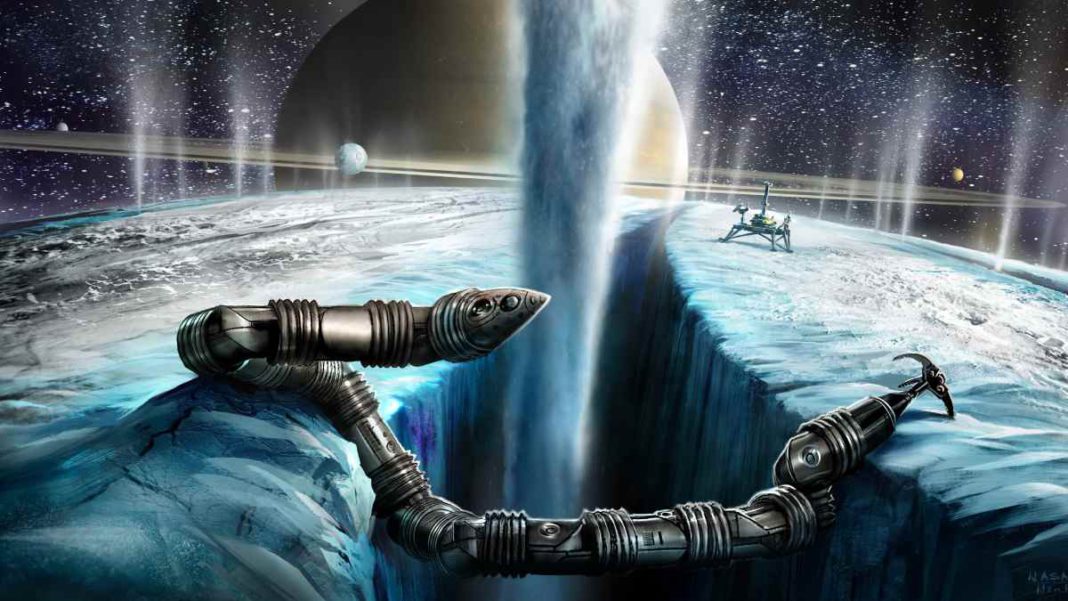UNITED STATES: NASA is set to take space exploration to the next level by developing a snake-like robot designed to explore the surface of Enceladus, one of Saturn’s 83 moons.
The Exobiology Extant Life Surveyor (EELS) project is focused on searching for water and evidence of life-supporting conditions on Enceladus, which is believed to have a liquid ocean beneath its icy surface.
Enceladus is an ideal place for research because its icy surface is reasonably smooth and its temperatures are below 300 degrees Fahrenheit.
The Cassini spacecraft’s data show that plumes erupting from the surface are conduits directly to liquid water, which could open a route to a livable liquid ocean.
A robust tool for exploring a range of heavenly bodies, EELS is meant to be adaptive to traverse terrain with ocean-world-inspired features, fluidized media, confined labyrinthine habitats, and liquids.
The robot is an autonomous vehicle composed of numerous identical segments that house the actuation and propulsion components and the power and communication circuits that power them.
The robot can access a plume vent outlet and follow it to its ocean source, thanks to EELS’s inventive rotating propulsion modules. These units serve as underwater rails, grasping devices, and propeller units. The 16-foot-long robot is capable of navigating Enceladus’ hazardous terrain.
The EELS project is still in the planning stages, and NASA has yet to decide when the mission will launch. However, if the study is successful, it might lead to a more in-depth investigation of celestial bodies that were long thought to be unreachable.
The EELS system could also explore Martian polar caps and descending crevasses in the Earth’s ice sheets, expanding our knowledge of the universe and our ability to search for signs of life beyond our planet.
NASA’s Jet Propulsion Laboratory describes the EELS system as a mobile instrument platform designed to explore internal terrain structures, assess habitability, and ultimately search for evidence of life.
With the potential to revolutionise our understanding of the universe, the EELS project is one to watch for space enthusiasts and scientists alike.
Also Read: NASA’s Voyager-2 Receives Boost to Continue Mission Until 2026



